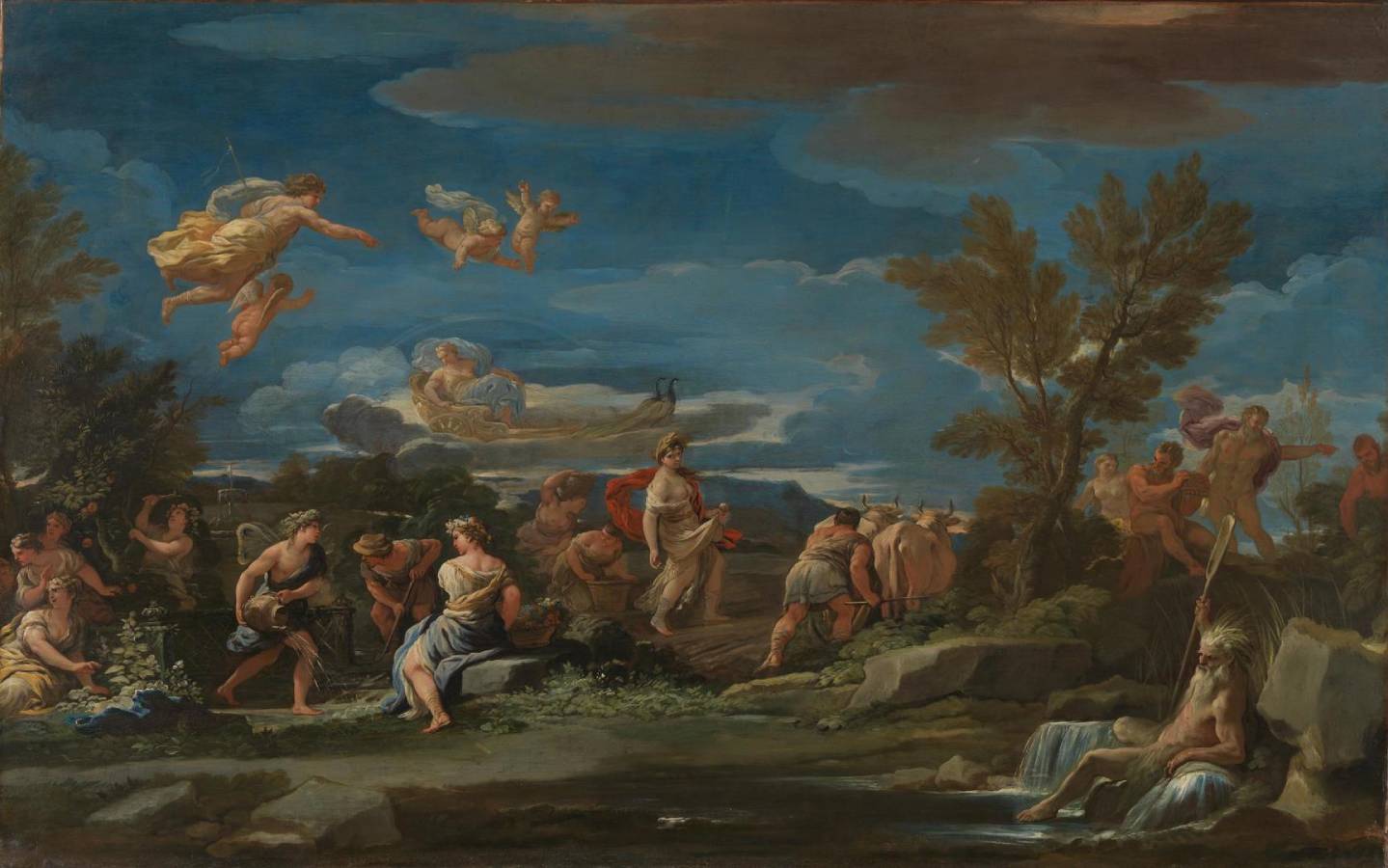Giordano, Luca (1634-1705)
Allegoria dell’Agricoltura (Allegory of Agriculture)
early 1680s
Oil on canvas, 121.4 x 192 cm
National Gallery, London
This modello, or detailed oil study, is one of a group of 12 that Giordano made in preparation for the ceiling frescoes in the Palazzo Medici Riccardi in Florence in 1682–85 (ten are in the National Gallery’s collection). The overall theme of these highly elaborate, showpiece frescoes is the progress of mankind by means of Wisdom and Virtue.
This is a study for the grand Galleria and corresponds with the right half of the ceiling decoration above the north wall, opposite the windows. The fresco forms part of a continuous frieze of interconnected allegorical and mythological scenes which runs around the lower part of the ceiling. The theme of this scene is the fertility of the Earth. It also alludes to Water and Air, combining three of the four elements celebrated in the frescoes.
At the centre of the painting we see Ceres, the goddess of agriculture and fertility, who was also associated with summer. She is sowing seeds in a field ploughed by the muscular figure of Triptolemus, who had similar mythological associations. Seated beside a basket of flowers, her back turned, is Flora, goddess of Spring. Close by, Zephyr – the figure with butterfly wings – waters the soil. He was the most benign of the wind gods, who brought the warm, gentle, westerly breeze which heralded spring.
Between Flora and Zephyr is Vertumnus, protector of gardens and husband of Pomona, the goddess of orchards and fruitfulness, who is pruning the branches of a pomegranate tree at the left. The nymphs attending her have turned in fear to watch the abduction of Ceres’s daughter Proserpine, which appears immediately to the left on the ceiling. The scene is presided over by Ceres’s sister, Juno, who rides an aerial chariot drawn by two peacocks. She was queen of the gods and, as well as being a war goddess, was traditionally associated with fertility.
In the right foreground is a river god astride a gushing spring. Behind him are naked, horned fauns (creatures that are half-man, half-goat). One plays a set of pan pipes, underlining the association of fauns with Pan, god of shepherds and the wilder side of nature. Pan had a lecherous side to him, which included a weakness for wood nymphs – one sits half-naked behind the fauns. Giordano omitted the fauns, the nymph and the river god from the final fresco, placing a fountain in the foreground instead. (NG)
Modelli for the Palazzo Medici Riccardi:
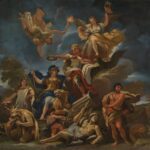 Giordano, Luca (1634-1705)
Giordano, Luca (1634-1705)
Allegoria della Fortezza
early 1680s
National Gallery, London
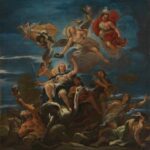 Giordano, Luca (1634-1705)
Giordano, Luca (1634-1705)
Allegoria della Giustizia
early 1680s
National Gallery, London
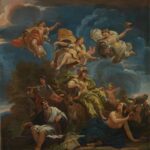 Giordano, Luca (1634-1705)
Giordano, Luca (1634-1705)
Allegoria della Prudenza
early 1680s
National Gallery, London
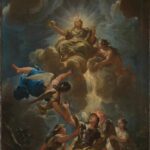 Giordano, Luca (1634-1705)
Giordano, Luca (1634-1705)
Allegoria della Sapienza Divina
early 1680s
National Gallery, London
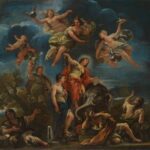 Giordano, Luca (1634-1705)
Giordano, Luca (1634-1705)
Allegoria della Temperanza
early 1680s
National Gallery, London
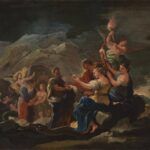 Giordano, Luca (1634-1705)
Giordano, Luca (1634-1705)
Antro dell’eternità
early 1680s
National Gallery, London
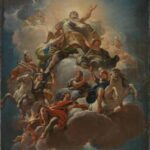 Giordano, Luca (1634-1705)
Giordano, Luca (1634-1705)
Apoteosi dei Medici
early 1680s
National Gallery, London
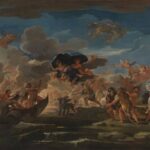 Giordano, Luca (1634-1705)
Giordano, Luca (1634-1705)
La barca di Caronte e il ratto di Proserpina
early 1680s
National Gallery, London
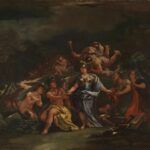 Giordano, Luca (1634-1705)
Giordano, Luca (1634-1705)
Minerva protettrice delle Arti e delle Scienze
early 1680s
National Gallery, London
This group of ten paintings was made by Giordano as a series of detailed oil studies (or modelli) for the ceiling frescoes in the Palazzo Medici Riccardi in Florence, which are among the artist’s finest achievements. The modelli are part of a set of 12 (the other two are in private collections).
Nine of the paintings relate to the ceiling of the highly ornate Galleria, built to house a precious collection of antiquities and function as a public reception room. The other is associated with the ceiling of the adjacent Library. The overall theme in the Galleria is the elevation of mankind through Wisdom and Virtue, using allegorical and mythological figures to represent different strengths and traits. It culminates in a centrepiece which presents the wealthy Medici family as the paradigm of both these qualities.
Giordano seems to have worked up these modelli to clarify his designs and may have presented them to his client, the Marquess Francesco Riccardi, for approval before the frescoes were executed. (NG)
